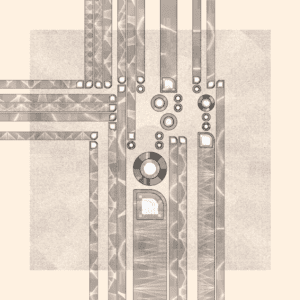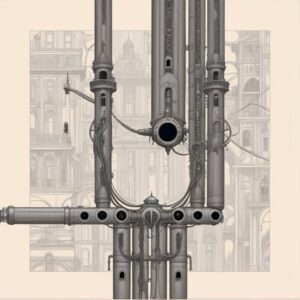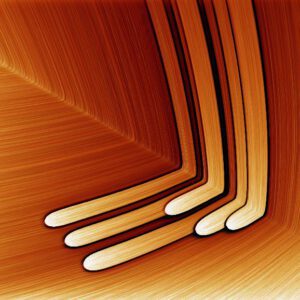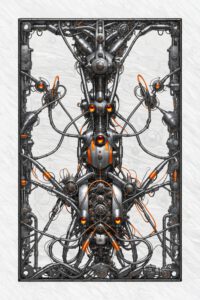During this year 2023, my interest in generating images with AI trained models has been growing until reaching a point where I believe I have found an interesting application.
As a generative artist, I enjoy developing complex algorithms and systems that produce a variety of aesthetically pleasing outputs.
Thanks to AI, it’s relatively easy to explore new drawing styles, combine ideas, and reinforce narratives through visual language.
My approach
Both techniques (Gen-Art and AI) have some similarities: Fast iteration, exploration of new audiovisual territories.
However, each technique has strengths and weaknesses. My approach to the mix between gen-art and AI begins by analyzing and identifying the most interesting characteristics of both:
Generative art:
- Coherence
- Diversity in compositions
- Rarities
AI Image generation
- Narrative, context
- Aesthetics unleashed
- Concept reinforcement
- Diversity in details
Both
- Fast iteration
- Surprising outputs
- Creativity boost
Currently, my exploration has led me to two different approaches, both starts with a long form generative collection then adding AI techniques to work with the generative outputs:
- Generative art as a creator of layouts and compositions to guide the AI in the construction of the final work.
- Generative art as creator of the final piece so it can be redrawn with AI
Generative art as layout creator.
Generative artists tend to accumulate projects that for some reason do not reach their final state.
In my case, there are a large number of studies carried out on composition, layout, balance whose final execution was not visually interesting.
These types of projects focused on automatic generation of layouts and compositions are a very good source of inputs for processing with AI.
These are outputs of a generative collection never published that creates interesting compositions but not enough good final renderes (in my opinion)






Using those images as input to the AI, the final outputs merges both the generative composition and the AI drawing skills. I think this is super interesting for collections based on AI as we can work with diversity in composition as well






A process of iteration and adjustment is required between the two techniques that allow a good execution of the final work. There is much to explore in this field.
Generative color palettes, layouting, or another aspects of the final work can be solved with generative art and the narrative, context, and final aesthetics added using AI.
Some other examples of explorations on generative layouting + AI rendering:






Considering unlocking old projects that were never finished by reaching a dead end. AI could help 🙂
AI as a narrative energizer.
Some generative works have a story behind them. A message, a narrative or a story that the artist tries to convey through his work.
Certainly, generative art has limitations in the type of visuals it can generate. That is good and wonderful. It has its own style. But for the sake of narrative, certain styles of drawing or animation can reinforce the story the artist intends to tell.
This is the case of my UBK (Ultrabionika) collection, which describes a world in which technology evolves in symbiosis with its environment.
The previously published UMK (Ultramekanica) collection explores that narrative by generating structures and compositions through generative art techniques.
In this case, image generation with AI is used to ‘expand’ the story, giving the viewer the sensation of being a continuation of the previous work that has been partially evolved.
The story talks about the evolution of machines and conceptually matches very well with the evolution of the technology used in the construction of new parts. From my point of view this is a case in which AI in the current context of digital art expands and amplifies the idea and execution of the original work. A paradigmatic use of how this technology allows art to evolve and become symbiotic with the rest of the styles, techniques and concepts.
Some samples of the ‘evolution’ from UMK to UBK.


Conclusion
When the goal of a project is to collect several hundred images in a single collection there are certain factors that we need to consider: Consistency, diversity, rarities.
These characteristics are achievable from generative art. Current AIs are good at drawing objects but I have not yet managed to guide them to work with certain aspects of the visual language such as compositions, balance, negative space, etc.
However, a collection of generative art that covers those design principles can be extended or expanded with the power of an AI that adds a layer of drawing to reinforce the concept or narrative of the collection.
I am very curious about what can emerge from this mixture of techniques and surely in the following months or years we will find great artists pushing the limits of what technology can do in the field of fine art.
Embrace the tech, enjoy the ride.
Have Fun!
Fernando

Subscribe to my newsletter. I will keep you informed of my projects and new releases
